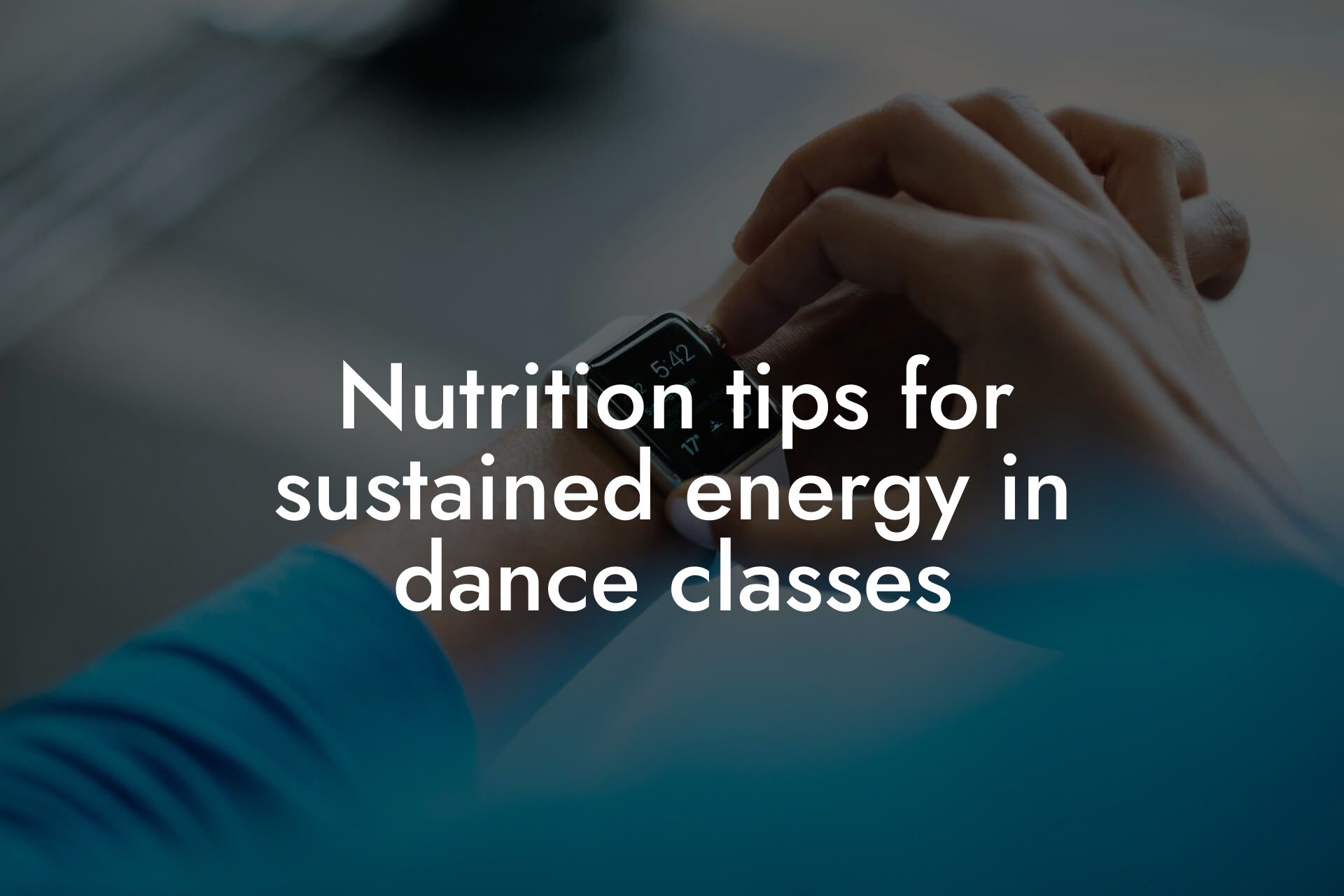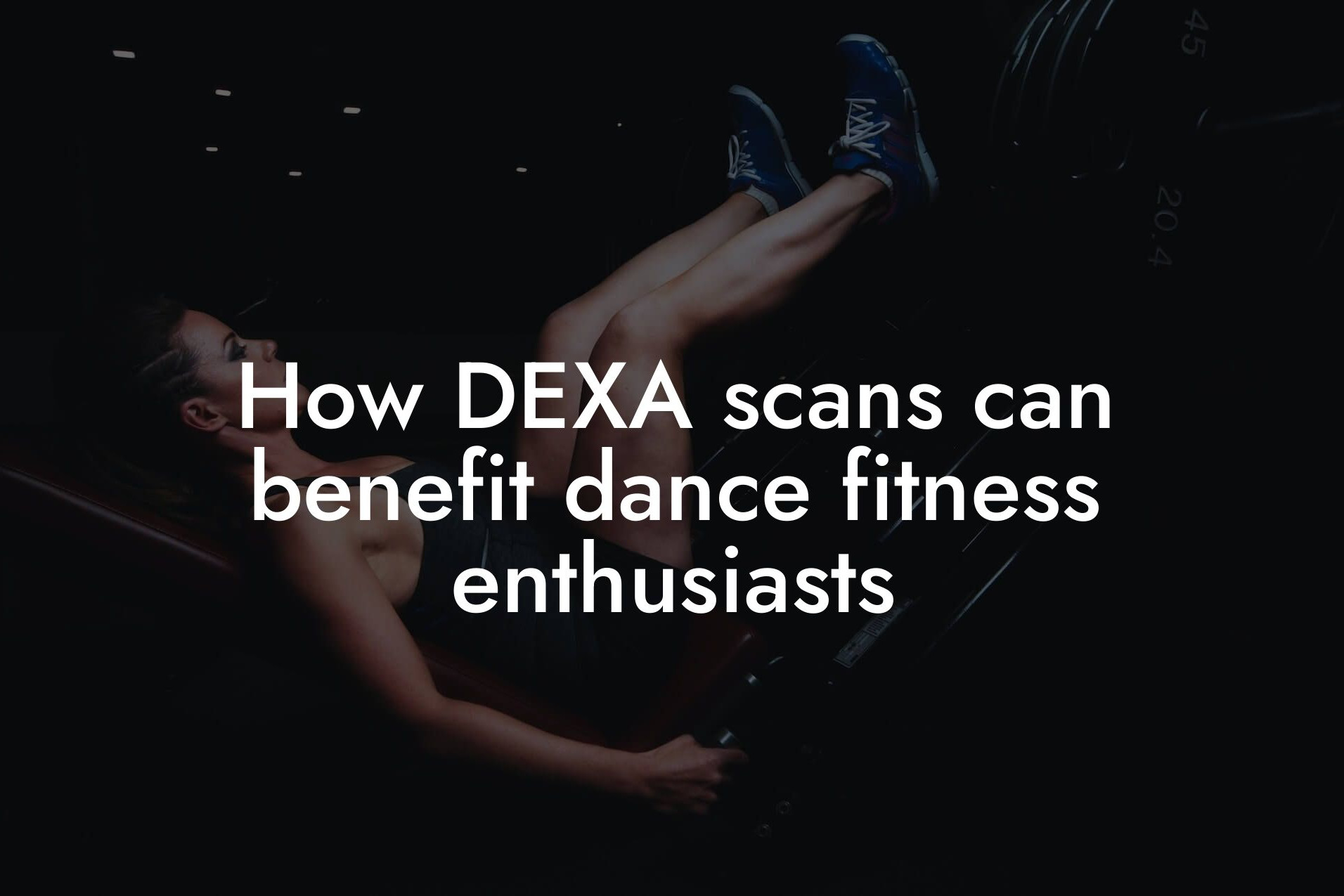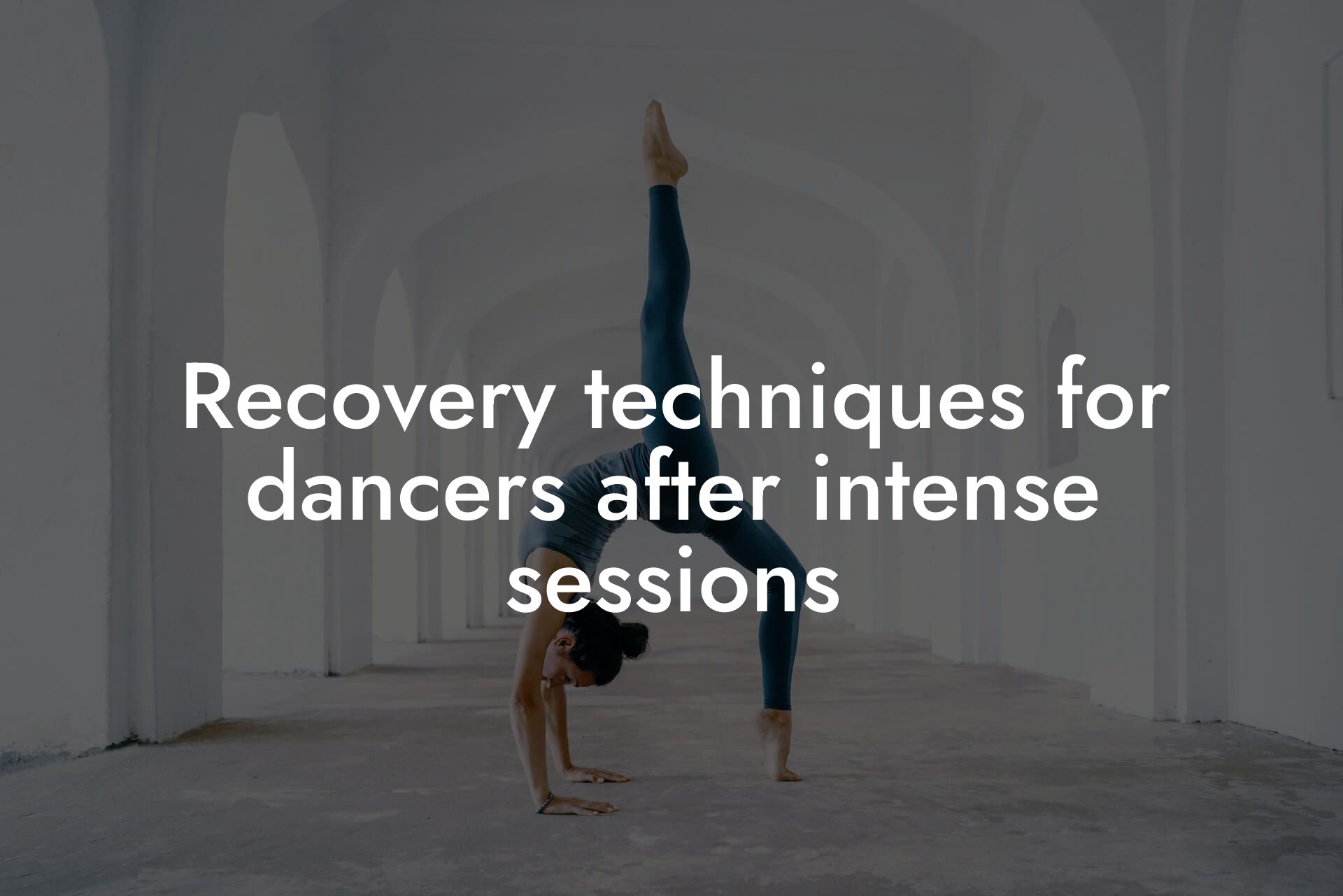As a high-earning professional, you understand the importance of maintaining a healthy and fit physique. Dance fitness is an excellent way to achieve this goal, but it requires a delicate balance of strength, flexibility, and grace. In this article, we'll explore the importance of each component and provide you with practical tips on how to achieve harmony in your dance fitness routine.
Table of Contents
The Importance of Strength in Dance Fitness
Strength is the foundation of dance fitness. It's essential to build muscular endurance to perform complex movements, maintain proper posture, and prevent injuries. A strong core, legs, and glutes are crucial for stability, power, and control. Without sufficient strength, you may struggle to execute movements correctly, leading to poor technique and increased risk of injury.
In dance fitness, strength is not just about building muscle mass; it's about developing functional strength that translates to movement. This means incorporating exercises that target multiple muscle groups simultaneously, such as squats, lunges, and leg press. It's also essential to focus on exercises that improve core strength, such as planks, Russian twists, and leg raises.
The Role of Flexibility in Dance Fitness
Flexibility is critical in dance fitness, as it allows for a full range of motion and helps prevent injuries. Good flexibility enables you to move freely and efficiently, making it easier to perform complex movements and transitions. It also reduces muscle tension, allowing you to conserve energy and maintain proper technique.
Flexibility exercises, such as stretching and foam rolling, should be incorporated into your dance fitness routine. Focus on exercises that target major muscle groups, including hamstrings, quadriceps, hip flexors, and lower back muscles. It's also essential to hold stretches for an adequate amount of time (at least 20-30 seconds) to allow for maximum relaxation of the muscle.
The Importance of Grace in Dance Fitness
Grace is often overlooked in dance fitness, but it's a critical component of a well-rounded routine. Grace refers to the fluidity and elegance of movement, which is essential for creating a visually appealing performance. It's not just about executing movements correctly; it's about doing so with poise, control, and confidence.
To develop grace in dance fitness, focus on exercises that improve your posture, alignment, and spatial awareness. Practice movements in front of a mirror to develop body awareness and make adjustments as needed. It's also essential to work on your musicality, timing, and expression to add depth and emotion to your performance.
How to Balance Strength, Flexibility, and Grace
Balancing strength, flexibility, and grace requires a thoughtful approach to your dance fitness routine. Here are some tips to help you achieve harmony:
- Start with a solid foundation of strength training to build muscular endurance and prevent injuries.
- Incorporate flexibility exercises into your routine, focusing on major muscle groups and holding stretches for an adequate amount of time.
- Practice movements in front of a mirror to develop body awareness and improve your posture, alignment, and spatial awareness.
- Focus on exercises that improve your musicality, timing, and expression to add depth and emotion to your performance.
- Incorporate cardio exercises, such as jumping jacks or burpees, to improve your endurance and burn calories.
Common Mistakes to Avoid
When it comes to balancing strength, flexibility, and grace in dance fitness, there are common mistakes to avoid:
- Overemphasizing strength training, which can lead to muscle imbalances and poor flexibility.
- Neglecting flexibility exercises, which can lead to reduced range of motion and increased risk of injury.
- Focusing too much on technique, which can lead to stiffness and lack of fluidity in movement.
- Ignoring proper posture and alignment, which can lead to poor technique and increased risk of injury.
The Benefits of Balancing Strength, Flexibility, and Grace
Balancing strength, flexibility, and grace in dance fitness offers numerous benefits, including:
- Improved overall fitness and athleticism
- Enhanced posture and body awareness
- Increased confidence and self-expression
- Reduced risk of injury and improved recovery
- Improved cardiovascular health and weight management
Balancing strength, flexibility, and grace in dance fitness is a delicate art that requires a thoughtful approach. By incorporating exercises that target each component, avoiding common mistakes, and focusing on overall fitness and athleticism, you can achieve a well-rounded routine that improves your physical appearance, body fat, physique, and bone density. Remember to stay committed, patient, and kind to your body as you work towards achieving harmony in your dance fitness routine.
At Tano Performance Group, we understand the importance of balancing strength, flexibility, and grace in dance fitness. Our DEXA machine provides a complete body assessment, giving you the information you need to take your fitness journey to the next level. Contact us today to learn more about how we can help you achieve your fitness goals.
Frequently Asked Questions
What is dance fitness and how does it benefit my overall health?
Dance fitness is a form of exercise that combines elements of dance with aerobic exercise to provide a fun and engaging way to improve cardiovascular health, increase strength and flexibility, and boost overall physical fitness. As a high-earning professional, incorporating dance fitness into your routine can help you maintain a healthy weight, improve your physique, and reduce stress levels.
How does dance fitness improve strength?
Dance fitness incorporates various movements that engage different muscle groups, helping to build strength and endurance. Through repetitive movements, such as squats, lunges, and leg lifts, dance fitness can help improve muscular strength, particularly in the legs, glutes, and core.
What types of flexibility exercises are included in dance fitness?
Dance fitness incorporates a range of flexibility exercises, including stretches, bends, and twists. These movements help to increase flexibility, improve range of motion, and reduce stiffness. By incorporating flexibility exercises into your dance fitness routine, you can improve your overall mobility and reduce the risk of injury.
How does dance fitness improve grace and coordination?
Dance fitness involves a range of movements that require coordination, balance, and control. Through repetitive practice, you can improve your overall grace and coordination, as well as develop greater body awareness. This can translate to improved posture, balance, and overall physical confidence.
Is dance fitness suitable for beginners?
Absolutely! Dance fitness is a low-impact form of exercise that can be modified to suit different fitness levels. Whether you're a complete beginner or an experienced dancer, dance fitness classes can be tailored to meet your individual needs and abilities.
What types of dance styles are incorporated into dance fitness?
Dance fitness classes often incorporate a range of dance styles, including hip hop, jazz, contemporary, and ballet. This variety helps to keep classes engaging and fun, while also providing a comprehensive workout.
How often should I practice dance fitness to see results?
For optimal results, we recommend practicing dance fitness at least 2-3 times per week. Consistency is key when it comes to seeing improvements in strength, flexibility, and overall physical fitness. However, even practicing once a week can have a positive impact on your overall health and wellbeing.
Can dance fitness help with weight loss?
Yes! Dance fitness is an effective way to burn calories and aid in weight loss. The high-energy movements and aerobic exercise involved in dance fitness can help you burn calories, increase your metabolism, and shed unwanted pounds.
How does dance fitness improve bone density?
Dance fitness incorporates weight-bearing exercises that help to improve bone density, particularly in the hips, legs, and spine. This can be especially beneficial for individuals at risk of osteoporosis or those who have a family history of the condition.
Can dance fitness help improve my posture?
Yes! Dance fitness involves a range of movements that engage the core muscles, which are essential for maintaining good posture. Through regular practice, you can improve your overall posture, reduce back pain, and develop greater body awareness.
How does dance fitness reduce stress and anxiety?
Dance fitness is a fun and engaging way to reduce stress and anxiety. The physical activity involved in dance fitness can help to release endorphins, which are natural mood-boosters. Additionally, the social aspect of dance fitness classes can provide a sense of community and connection, helping to reduce feelings of loneliness and isolation.
Can I practice dance fitness at home?
Yes! While dance fitness classes can be a fun and social way to stay active, you can also practice dance fitness at home. There are many online resources and tutorials available that can guide you through dance fitness routines and provide you with the support and motivation you need to stay on track.
What should I wear to a dance fitness class?
We recommend wearing comfortable, breathable clothing that allows for a full range of motion. You may also want to consider wearing dance shoes or sneakers that provide support and traction.
Do I need to have any prior dance experience to participate in dance fitness?
No! Dance fitness is designed to be accessible to individuals of all fitness levels and dance backgrounds. Our experienced instructors will guide you through each routine, providing modifications and adjustments as needed to ensure that you feel comfortable and confident.
How does dance fitness improve cardiovascular health?
Dance fitness is an aerobic form of exercise that raises your heart rate and improves cardiovascular health. Through regular practice, you can improve your overall cardiovascular fitness, increase your endurance, and reduce your risk of heart disease.
Can dance fitness help improve my overall physique?
Yes! Dance fitness is a comprehensive form of exercise that can help improve your overall physique. Through a combination of strength, flexibility, and cardiovascular exercises, dance fitness can help you build lean muscle, increase your metabolism, and achieve a more toned and defined physique.
How does dance fitness improve body awareness?
Dance fitness involves a range of movements that require coordination, balance, and control. Through regular practice, you can develop greater body awareness, improve your posture, and reduce your risk of injury.
Can dance fitness help improve my mood?
Yes! Dance fitness is a fun and engaging way to improve your mood and reduce stress and anxiety. The physical activity involved in dance fitness can help to release endorphins, which are natural mood-boosters. Additionally, the social aspect of dance fitness classes can provide a sense of community and connection, helping to reduce feelings of loneliness and isolation.
How does dance fitness improve overall physical fitness?
Dance fitness is a comprehensive form of exercise that can help improve overall physical fitness. Through a combination of strength, flexibility, and cardiovascular exercises, dance fitness can help you build lean muscle, increase your endurance, and achieve a more toned and defined physique.
Can dance fitness help reduce the risk of injury?
Yes! Dance fitness incorporates a range of movements that help to improve flexibility, balance, and coordination. Through regular practice, you can reduce your risk of injury, improve your overall physical fitness, and achieve a greater sense of body awareness.
How does dance fitness improve muscle tone?
Dance fitness incorporates a range of movements that engage different muscle groups, helping to build strength and endurance. Through repetitive movements, such as squats, lunges, and leg lifts, dance fitness can help improve muscular tone, particularly in the legs, glutes, and core.
Can dance fitness help improve my overall confidence?
Yes! Dance fitness is a fun and empowering way to improve your overall confidence. Through regular practice, you can develop greater body awareness, improve your posture, and achieve a more toned and defined physique. This can translate to improved confidence in all areas of your life.
How does dance fitness improve flexibility and range of motion?
Dance fitness incorporates a range of flexibility exercises, including stretches, bends, and twists. These movements help to increase flexibility, improve range of motion, and reduce stiffness. By incorporating flexibility exercises into your dance fitness routine, you can improve your overall mobility and reduce the risk of injury.
Can dance fitness be modified to suit different fitness levels?
Absolutely! Dance fitness classes can be modified to suit different fitness levels. Our experienced instructors will provide modifications and adjustments as needed to ensure that you feel comfortable and confident, regardless of your fitness level.
Here are some related articles you might love...
- Nutrition tips for sustained energy in dance classes
- How DEXA scans can benefit dance fitness enthusiasts
- Recovery techniques for dancers after intense sessions
- Bone density and its role in dance performance
- The impact of body composition on dance fitness performance
- Reducing body fat for improved flexibility and agility in dance
- The role of dance in cardiovascular health
- Maintaining muscle tone and endurance in dance fitness
- Strength training tips to complement your dance fitness routine
Zak Faulkner
Zak Faulkner is a leading authority in the realm of physical health and body composition analysis, with over 15 years of experience helping professionals optimise their fitness and well-being. As one the experts behind Tano Performance Group, Zak has dedicated his career to providing in-depth, science-backed insights that empower clients to elevate their physical performance and overall health.
With extensive knowledge of DEXA technology, Zak specializes in delivering comprehensive body assessments that offer precise data on body fat, muscle mass, bone density, and overall physique. His expertise enables individuals to make informed decisions and achieve their fitness goals with accuracy and confidence. Zak’s approach is rooted in a deep understanding of human physiology, combined with a passion for helping clients unlock their full potential through personalised strategies.
Over the years, Zak has earned a reputation for his commitment to excellence, precision, and client-focused service. His guidance is trusted by top professionals who demand the best when it comes to their health. Whether advising on fitness programs, nutritional strategies, or long-term wellness plans, Zak Faulkner’s insights are a valuable resource for anyone serious about taking their health and fitness to the next level.
At Tano Performance Group, Zak continues to lead our Content Team revolutionising how professionals approach their physical health, offering unparalleled expertise that drives real results.




